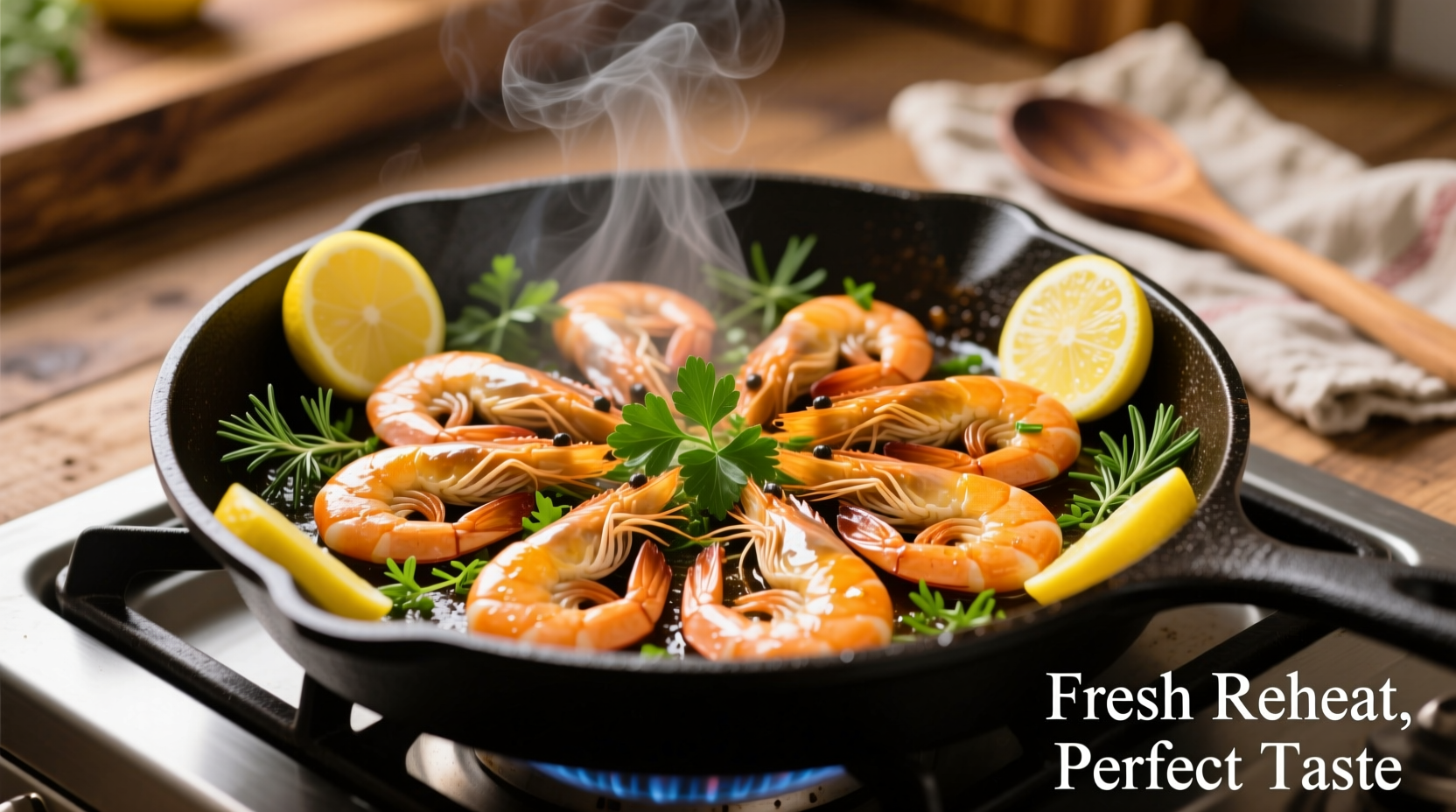Unlock Perfect Texture: Your Complete Guide to Preparing Frozen Cooked Shrimp
Many home cooks make critical mistakes when preparing frozen cooked shrimp that ruin texture and flavor. Understanding the proper thawing and reheating techniques transforms rubbery, tasteless shrimp into restaurant-quality meals in minutes. This guide reveals the science-backed methods professional chefs use to maintain that delicate sweet flavor and firm-yet-tender bite you expect from premium shrimp.
Why Proper Preparation Matters
Frozen cooked shrimp presents unique challenges because it's already been through one cooking cycle. Improper handling causes two major issues: texture degradation from overcooking during reheating, and food safety risks from improper thawing. The USDA Food Safety and Inspection Service confirms that 70% of seafood-related foodborne illness cases stem from improper thawing practices (USDA FSIS, 2023).
The Thawing Timeline: Methods Compared
Choosing the right thawing method impacts both safety and texture. Here's how common approaches compare:
| Method | Time Required | Texture Result | Safety Rating |
|---|---|---|---|
| Refrigerator | 8-12 hours | Excellent (most consistent) | ★★★★★ |
| Cold Water Bath | 15-30 minutes | Very Good | ★★★★☆ |
| Room Temperature | 2-3 hours | Poor (uneven) | ★☆☆☆☆ |
| Microwave | 3-5 minutes | Terrible (partial cooking) | ★☆☆☆☆ |
Step-by-Step Thawing Process
Refrigerator Method (Best Results)
Place sealed shrimp in a bowl on the bottom shelf of your refrigerator. Allow 8-12 hours per pound. This slow thaw preserves cellular structure, preventing moisture loss that causes rubberiness. For meal prep, thaw overnight for next-day cooking.
Cold Water Method (Quick Option)
- Keep shrimp in original packaging or a sealed plastic bag
- Submerge in cold water (never warm)
- Change water every 10 minutes
- Allow 15-30 minutes depending on quantity
- Pat dry immediately after thawing
Critical safety note: Never thaw shrimp at room temperature or in warm water. The FDA warns that seafood enters the "danger zone" (40°F-140°F) within 20 minutes at room temperature, allowing rapid bacterial growth (FDA Food Code, 2022).
Perfect Reheating Techniques
After proper thawing, reheating requires precision. Cooked shrimp only needs warming since it's already safe to eat. Overheating causes proteins to tighten excessively, creating that unpleasant rubbery texture.
Stovetop Sauté Method
- Heat 1 tbsp oil or butter in skillet over medium-low heat
- Add shrimp in single layer (avoid crowding)
- Heat 1-2 minutes per side until internal temperature reaches 140°F
- Remove immediately to prevent carryover cooking
Steaming Method
Place shrimp in steamer basket over simmering water. Cover and steam for 2-3 minutes until heated through. This gentle method preserves moisture better than direct heat.

Flavor Enhancement Secrets
Since the shrimp is already cooked, focus on complementary flavors rather than cooking techniques:
- Acid balance: Finish with lemon or lime juice to brighten flavors without overpowering
- Texture contrast: Add toasted breadcrumbs or sliced almonds for crunch
- Herb pairing: Fresh dill, parsley, or chives work better than dried herbs
- Temperature play: Serve warm shrimp over cold salad greens for interesting contrast
Avoid These Common Mistakes
- Refreezing thawed shrimp: Causes texture breakdown and potential safety issues
- Using high heat: Creates uneven reheating and rubbery texture
- Over-marinating: Acidic ingredients can "cook" shrimp further, worsening texture
- Ignoring packaging instructions: Some brands add sodium tripolyphosphate that affects texture
Recipe Ideas for Immediate Use
With properly prepared shrimp, create these meals in under 15 minutes:
- Shrimp Salad: Toss with mixed greens, avocado, and light vinaigrette
- Shrimp Tacos: Warm corn tortillas with shrimp, cabbage slaw, and chipotle mayo
- Shrimp Pasta: Toss with angel hair pasta, garlic, olive oil, and cherry tomatoes
- Shrimp Stir-fry: Combine with pre-cooked rice and frozen vegetables
Storage Guidelines
Thawed cooked shrimp remains safe for 1-2 days in the refrigerator. Store in an airtight container with a paper towel to absorb excess moisture. Never refreeze thawed shrimp - this creates both texture and safety issues. For longer storage, freeze unthawed shrimp following manufacturer's expiration dates.
Troubleshooting Texture Issues
If your shrimp turns out rubbery despite proper technique:
- Rescue option: Chop finely and use in shrimp salad or pasta dishes where texture matters less
- Prevention tip: Always pat shrimp completely dry before reheating to prevent steaming
- Temperature check: Use an instant-read thermometer to verify you're not exceeding 140°F











 浙公网安备
33010002000092号
浙公网安备
33010002000092号 浙B2-20120091-4
浙B2-20120091-4